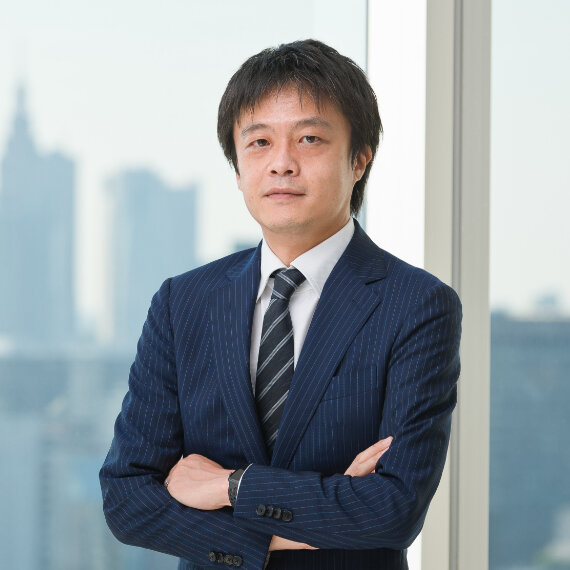ブログ
Breaking News: Supreme Court Ruling in DWANGO v. FC2 Case - Network-Related Inventions and Territoriality
2025.03.25
Our firm represented appellee DWANGO Co., Ltd., in a patent infringement lawsuit between DWANGO and FC2 et al., with the judgment from the Supreme Court on March 3, 2025, dismissing the appeals (Cases No. 14 and 15 (ju), 2023; hereinafter, collectively referred to as “Case I”). Additionally, on the same day, the Supreme Court also dismissed the appeal in a related case (Case No. 2028 (ju), 2023; hereinafter referred to as “Case II”). These judgments are of extremely significant practical importance as they represent the Supreme Court’s first rulings on the applicability of and criteria for Japanese patent rights to cross-border acts of implementing network-related inventions. An overview is provided below.
Case I
<Summary of Facts>
Appellee DWANGO (plaintiff in the first instance, patent holder; hereinafter referred to as “DWANGO”) holds a patent right (hereinafter referred to as “Patent Right 1”) relating to a program that controls comment display. DWANGO filed a lawsuit before the Tokyo District Court against FC2, Inc., a U.S. corporation, and Homepage System Inc., a Japanese corporation (collectively, “FC2 et al.”), alleging that FC2 et al.’s act of transmitting a program that controls comment display from servers located in the United States to users within Japan infringes Patent Right 1.
The Tokyo District Court dismissed DWANGO’s claim, ruling that FC2 et al.’s actions did not implement the inventions of Patent Right 1.
The Intellectual Property High Court (“IPHC”) overturned the first-instance decision, acknowledging that FC2 et al.’s program fell within the technical scope of the invention pertaining to Patent Right 1. Furthermore, the IPHC provided the following interpretation: “Even if, formally, not all elements of the implementation of a patented invention are completed within the territory of Japan, if, substantially and comprehensively, it can be evaluated as having been carried out within the territory of Japan, extending the effect of Japanese patent rights to it does not contradict the aforementioned principle of territoriality. . . . Regarding the act of provision in question, when it can be evaluated that the provision was carried out substantially and comprehensively within the territory of Japan, taking into consideration various circumstances such as whether the portion of the provision carried out outside the territory of Japan and the portion carried out within the territory of Japan can be clearly and easily distinguished, whether the control of the provision is carried out within the territory of Japan, whether the provision is directed towards customers, etc., located within the territory of Japan, and whether the effect of the patented invention obtained by the provision is manifested within the territory of Japan, it is reasonable to interpret that it falls under ‘provision’ as referred to in the Japanese Patent Act.” Based on this interpretation, the IPHC concluded that FC2 et al. infringed Patent Right 1.

Outline of FC2 et al.’s Program Transmission (Cited from the Supreme Court Website)
<Issue before the Supreme Court>
It is generally understood that the effect of Japanese patent rights is valid only within the territory of Japan (Supreme Court Judgment of July 1, 1997, Minshu Vol. 51, No. 6, p. 2299; Supreme Court Judgment of September 26, 2002, Minshu Vol. 56, No. 7, p. 1551; the so-called principle of territoriality).
In this case, because FC2 et al. were transmitting a program that controls comment display from servers located in the United States to users located in Japan, the issue arose as to whether the effect of Japanese patent rights extends to this act, in relation to the principle of territoriality. The issue was whether FC2 et al.’s act of transmitting the program constitutes “provision through a telecommunications line” under Article 2, paragraph (3), item (i) of the Patent Act and “transfer, etc.” under Article 101, item (i) of the same Act.
<Summary of Supreme Court Judgment>
The Supreme Court dismissed FC2 et al.’s appeal, handing down the following judgment.
First, the Supreme Court, citing the 2002 precedent, affirmed the principle of territoriality, which recognizes the effect of Japanese patent rights only within the territory of Japan. However, it stated, “In the modern era, where the cross-border distribution of information through telecommunications lines has become extremely easy, if programs, etc., are provided within the territory of Japan by being transmitted from outside the territory of Japan through telecommunications lines, simply because of the transmission from outside the territory of Japan, the effect of Japanese patent rights should not always be excluded, and if the above provision does not fall under ‘provision through telecommunications lines’ (Article 2, paragraph (3), item (i) of the Patent Act), it would not align with the purpose of the Patent Act, which is to contribute to the development of industry through the protection and encouragement of inventions, such as by granting patent holders the exclusive right to commercially implement patented inventions. Therefore, even in such cases, if, considering the act in question as a whole, it is evaluated as substantially falling under ‘provision through telecommunications lines’ within the territory of Japan, there is no reason to prevent the effect of Japanese patent rights from extending to that act. This principle is also understood to apply without difference to ‘transfer, etc.’ mentioned in Article 101, item (i) of the Patent Act.”
Furthermore, regarding the distribution of programs by FC2 et al. (referred to as “Distribution” in Case I), the Supreme Court ruled, “The distribution in this case is carried out as part of the information processing process when providing each service in Japan, and it is intended to naturally produce the effects of each program invention at terminals located in Japan. In relation to the production of these effects, the location of the aforementioned servers outside the territory of Japan has no particular significance. Furthermore, in relation to the appellee’s possession of the patent rights in this case, there is no indication of circumstances suggesting that the distribution in this case, carried out in the manner described above, does not have an economic impact on the appellee. Therefore, it is reasonable to evaluate that the appellants, through the distribution in this case, are substantially providing each program through telecommunications lines within the territory of Japan.”
Additionally, this judgment rendered a similar ruling regarding “transfer, etc.” in Article 101, item (i), stating, “It is reasonable to evaluate that the appellants, through the distribution in this case, are substantially transferring, etc., within the territory of Japan, as a provision through telecommunications lines of each program in this case, which is a product used solely for the production of the aforementioned device.”
Case II
<Summary of Facts>
Appellee DWANGO (plaintiff in the first instance) holds a patent right relating to a comment distribution system (“Patent Right 2”). DWANGO filed a lawsuit before the Tokyo District Court against FC2 et al., alleging that FC2 et al.’s act of creating a system comprising user terminals located in Japan and servers located in the United States managed by FC2 et al., by transmitting files, etc., containing programs from servers located in the United States to users in Japan, infringes this patent right.
The Tokyo District Court determined that FC2 et al.’s system fell within the technical scope of the invention pertaining to Patent Right 2. However, based on the principle of territoriality, it ruled that the act did not constitute “production” under Article 2, paragraph (3) item (i) of the Patent Act.
The IPHC, from the perspective of appropriately protecting patent rights relating to network-type system inventions, provided the following interpretation: “regarding whether or not the act of newly creating the network-type system falls under the “production” in Article 2, paragraph (3), item (i) of the Patent Act, even if the server, which is a part of the elements constituting the system exists outside the country, by comprehensively considering a specific mode of the act, a function/role performed in the invention by those elements existing in the country among the elements constituting the system, a place where the effect of the invention can be obtained by use of the system, an influence that the use thereof exerts on the economic profits of the patentee of the invention and the like, it is reasonable to interpret that, when the act is found to be performed in the territory of our country, it falls under the “production” in Article 2, paragraph (3), item (i) of the Patent Act.”
<Issue before the Supreme Court>
In this case, the issue was whether FC2 et al.’s act of creating a system that includes servers outside the territory of Japan and terminals within the territory of Japan constitutes “production” under Article 2, paragraph (3), item (i) of the Patent Act.
<Summary of Supreme Court Judgment>
The Supreme Court dismissed FC2 et al.’s appeal, providing the following judgment.
First, the Supreme Court, while also presupposing the principle of territoriality in the second case, stated, “In the modern era, where the cross-border distribution of information through telecommunications lines has become extremely easy, regarding a system that includes servers and terminals, if a part of the act of constructing the system is done from outside the territory of Japan through telecommunications lines, and if a server, which is a part of the configuration of the system, is located outside the territory of Japan, simply because it includes acts or configurations outside the territory of Japan, the effect of Japanese patent rights should not always be excluded, and if the act of constructing the system does not fall under ‘production’ as referred to in Article 2, paragraph (3), item (i) of the Patent Act, it would not align with the purpose of the Patent Act, which is to contribute to the development of industry through the protection and encouragement of inventions, such as by granting patent holders the exclusive right to commercially implement patented inventions. Therefore, even in such cases, if, considering the act of constructing the system and the system constructed by it as a whole, it is evaluated that the act substantially falls under ‘production’ within the territory of Japan, there is no reason to prevent the effect of Japanese patent rights from extending to it.”
Furthermore, regarding the distribution of files by FC2 et al. (referred to as “Distribution” in Case II), the Supreme Court ruled, “The construction of the system in this case by the distribution in this case is carried out as part of the information processing process when providing each service in Japan, and after configuring the system in this case, which includes terminals located in Japan, it is intended to naturally produce the effects of each invention in this case at terminals located in Japan. In relation to the production of these effects, the location of the aforementioned servers outside the territory of Japan has no particular significance. Furthermore, in relation to the appellee’s possession of the patent rights in this case, there is no indication of circumstances suggesting that the distribution in this case, carried out in the manner described above, or the system in this case constructed as a result, does not have an economic impact on the appellee. Therefore, it is reasonable to evaluate that the appellants, through the distribution in this case and the construction of the system in this case as a result, are substantially producing the system in this case within the territory of Japan.”
Overall Review
As seen above, the Supreme Court, regarding the issue of whether Japanese patent rights extend to cross-border acts of implementing network-related inventions, for both “provision through telecommunications lines” of programs, etc., and “production” of systems, rendered the judgment that the effect of Japanese patent rights extends to the act in question when, considering the act as a whole, it is evaluated as substantially falling under “provision through telecommunications lines” / “production” within the territory of Japan. To determine this, the Supreme Court considered factors such as the place where the effect of the patented invention is demonstrated and the impact on the economic benefits of the patent holder. These two factors appear to be significant in deciding whether the “provision” of a program or “production” of a system takes place within the territory of Japan.





